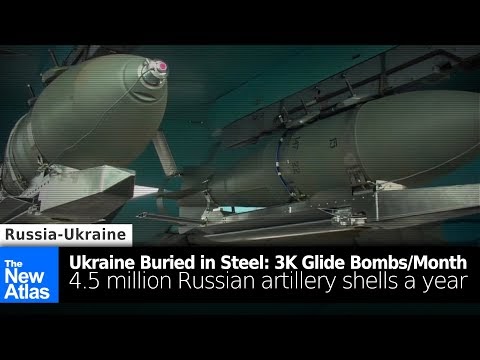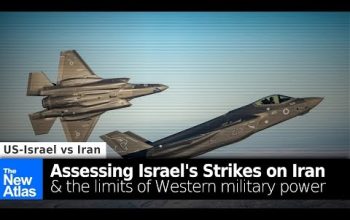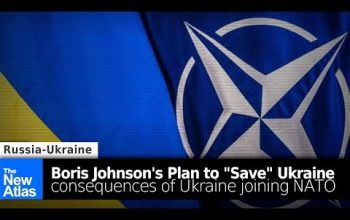The collective Western media, once replete with stories of shoddy, antiquated Russian weapons being flattened by “game-changing” NATO weapons, now features headlines about the growing gap between Russian military production and NATO’s inability to catch up. Other headlines now admit that previously vaunted NATO weapons have shortcomings exposed over the course of the past 2 years plus of fighting.
Buried in Steel: Russian Artillery Shell and Glide Bomb Production
Among these headlines is Sky News’ late May 2024 article, “Russia is producing artillery shells around three times faster than Ukraine’s Western allies and for about a quarter of the cost,” which admits:
The research on artillery rounds by Bain & Company, which drew on publicly available information, found that Russian factories were forecast to manufacture or refurbish about 4.5 million artillery shells this year compared with a combined production of about 1.3 million rounds across European nations and the US.
Artillery is among the most decisive factors deciding the fighting in Ukraine. According to the US government and Western corporate-funded Council on Foreign Relations, an April 2024 brief titled, “Weapons of War: The Race Between Russia and Ukraine,” notes:
Artillery has been known as the “king of battle” for centuries, and this largely remains true today. In the Russia-Ukraine war, artillery fire accounts for about 80 percent of the casualties on both sides. That makes it all the more ominous that in recent months, following the U.S. aid cutoff, Ukraine went from being outgunned five to one in artillery fire to ten to one.
If Ukraine is outgunned anywhere between 5:1 to 10:1, this means its casualties will likewise reflect this disparity. According to various Western sources including the British Ministry of Defense, if Russia has suffered “355,000” casualties, Ukraine has suffered approximately 5 to 10 times more, or 1.7 million to 3.5 million Ukrainian casualties.
More realistically, Russian losses are more likely 50,000 versus half a million Ukrainian losses.
Another growing area of concern for NATO and its Ukrainian proxies is Russia’s use of precision-guided glide bombs dropped by Russian warplanes outside the range of what remains of Ukrainian air defenses, able to target and dismantle Ukrainian fortifications on a scale that even Russia’s immense artillery advantage is incapable of.
The BBC, in a late May 2024 article titled, “Russia’s glide bombs devastating Ukraine’s cities on the cheap,” would explain:
Russia is increasingly using “glide bombs” – cheap but highly destructive ordnance – to advance its offensive in Ukraine.
More than 200 of them are thought to have been used in just a week to pound Ukraine’s northern town of Vovchansk during Russia’s current cross-border advance near Kharkiv.
President Volodymyr Zelensky said 3,000 such bombs were dropped on the country in March alone.
While Ukraine has received the US equivalent, the Joint Direct Attack Munition (JDAM), with its dwindling number of warplanes coupled with superior Russian electronic warfare (EW) capabilities, this capability has been rendered irrelevant.
The London-based Royal United Services Institute (RUSI) in a June 2023 report titled, “Jamming JDAM: The Threat to US Munitions from Russian Electronic Warfare,” would extensively explain the shortcomings of US munitions and the unlikelihood of the US solving the technical challenges of proofing US glide bombs against Russian jamming.
Even if the US were able to overcome Russian EW capabilities, the number of US and European-made glide bombs would always remain a fraction of those used by Russia due to the lack of warplanes and trained pilots able to deliver them.
NATO “Wonder Weapons” Fail to Meet Expectations
Beyond US-made JDAMs failing to hit their mark, a number of other precision-guided weapons transferred to Ukraine have also faced Russian EW jamming including the US-made Excalibur 155mm GPS-guided artillery shell, the Guided Multiple Launch Rocket System (GMLRS) fired by likewise US-made HIMARS and M270 launchers, and the US-made Ground-Launched Small Diameter Bombs (GLSDBs) also launched via HIMARS and M270 systems.
While these weapons have been employed successfully on the battlefield, their overall effectiveness has been hindered by Russian EW capabilities. Because they are also provided in smaller quantities than the equivalent Russian munitions, this creates a decisive advantage for Russia.
Other “game-changing” weapons that have been exposed throughout the fighting in Ukraine includes German-made Leopard 1 and 2 main battle tanks (MBT) and the British-made Challenger 2 MBT, both of which were used amid Ukraine’s failed 2023 offensive.
Also transferred to Ukraine were American-made M1 Abrams MBT. These were held back during the 2023 offensive, and instead made their battlefield debut during fighting in Avdeevka this year, amid which Russian forces prevailed.
Images and footage of M1 Abrams burning on the battlefield demonstrated they were no exception to the outcome of other Western MBTs in Ukraine.
CNN, in a recent article, interviewed Ukrainian crews attempting to use the M1 Abrams, reporting their frustration and disappointment.
Titled, “Soldiers in Ukraine say US-supplied tanks have made them targets for Russian strikes,” the article admits:
Crews trained in Germany said the vehicles – the US military’s main $10 million battle tank used in Iraq against Saddam Hussein’s forces and insurgents – lacked armor that could stop modern weapons.
“Its armor is not sufficient for this moment,” said one crew member, callsign Joker. “It doesn’t protect the crew. For real, today this is the war of drones. So now, when the tank rolls out, they always try to hit them.”
This contradicts claims made by Western analysts and commentators praising the “survivability” of Western armored vehicles.
The article also discusses the logistical and maintenance challenges of the tank, rendering many of those remaining inoperable.
The article admits:
…they appear to have technical issues too.
One, parked under a tree, was almost immobile during CNN’s visit, due to an engine problem, the crew say, despite the vehicle having just been shipped in from Poland. They also complain of how, in rain or fog, condensation can fry the electronics inside the vehicle.
CNN also reported that the ammunition provided to Ukrainian M1 Abrams crews was meant for tank-on-tank warfare, which the article admits is a rarity. The tanks are instead used as assault guns to fire on infantry positions, meaning that a high-explosive round would be more appropriate, but apparently were not provided in sufficient numbers.
Finally, CNN admits that the failure of US-made M1 Abrams tanks may also be owed to the fact that Ukraine is expected to use them in a manner the US and NATO never intended, without sufficient artillery and air support.
CNN notes:
The Ukrainian crew expressed frustration the tanks were made for a NATO style of warfare, in which air power and artillery prepare the battlefield before tanks and infantry advance. Kyiv has long bemoaned its lack of artillery and air power.
Ukraine has neither, making all of the complex, heavy, unreliable Western tanks transferred to Ukrainian forces particularly vulnerable, including the M1 Abrams.
A Predictable Outcome
Contrary to the many Western headlines heralding the transfer of Western weapons to Ukraine anticipating “game-changing” outcomes, the failure of US-European hardware was entirely predictable.
The myth of Western military superiority was based entirely on the series of mismatches spanning multiple conflicts over the course of several decades where the US and its allies waged war on nations with poorly trained, poorly equipped forces. While many of these nations were supposedly operating “Soviet” or “Russian” military equipment, it was multiple generations behind the state-of-the-art and operated by poorly organized units unable to use the equipment to its full potential.
Even with these many disadvantages, nations targeted by US wars of aggression over the decades did demonstrate that, at least in theory, US and European weapons had limitations and would be vulnerable in battle against a peer or near-peer adversary. Because of this, and other factors including challenges regarding training and logistics, the effectiveness (or lack thereof) of Western weapons on the battlefield in Ukraine was predictable.
The myth of Western military superiority has now been fully shattered in Ukraine, where Western weapons are turning out to suffer both quantitative and qualitative limitations, giving Russian forces a decisive advantage on the battlefield, and an advantage the West is incapable of seizing upon for itself.
The aforementioned Sky News article, discussing the vast and multiplying number of Russian glide bombs, also noted shortages of Western-provided weapons owed to insufficient military industrial production across the West.
The article includes a section titled, “Factories could win the war on frontlines,” admitting:
The importance of producing weapons and ammunition is why many experts say factory production lines – rather than the frontline – could be where the war in Ukraine is won.
This reflects the adage, “amateurs talk strategy and professionals talk logistics.”
The article explains that Western arms manufacturers only expand production capacity when sufficient orders are placed. This maximizes profit, but at the expense of readiness. Expanding production is a costly process, requiring resources, and more critically, time.
Russia’s state-owned arms manufacturing enterprises prioritize readiness and maintain excessive capacity regardless of orders, meaning it is capable of ramping up production in a relatively short period of time measured in months versus Western factories which require a year or more.
It is clear that Ukraine’s current crisis is a result, at least in part, of Russia’s long-term focus on military industrial production and logistics, years before the SMO was launched, versus a collective West whose proxy war is being fought with weapons and a military industrial base never meant to operate on this scale, at this intensity, and for this long.
If and when the collective West makes serious efforts to expand military industrial production, Russia is already working from a multi-year head start. Collective US-European artillery shell production, for example, is projected to expand to between 2.5 and 3 million shells a year between 2025-2027. This is still less than Russia produces currently. By 2025-2027, Russia will almost certainly have expanded production even further.
Ultimately, Ukraine’s “victory” amid this conflict was never a genuine objective among policymakers in Washington, London, and Brussels. As admitted in the 2019 RAND Corporation paper, “Extending Russia,” the plan always was to provoke a costly Russian intervention in Ukraine to overstretch Russia and possibly precipitate a Soviet Union-style collapse. The conflict for Ukraine, the report predicted, “could produce disproportionately large Ukrainian casualties, territorial losses, and refugee flows. It might even lead Ukraine into a disadvantageous peace.”
Today we see what the aftermath of Washington’s proxy war with Russia in Ukraine is, an Eastern European nation, once balancing itself between East and West, benefiting from doing business with both worlds, being buried by Russian steel for the benefit of allies who are unable and also unwilling to genuinely assist Ukraine.
Much of the rhetoric coming out of the collective West is designed to encourage Ukraine to irrationally fight on despite the obvious outcome of the fighting – an outcome well-known even as early as 2019. While a deep hatred has been deliberately bred in the hearts and minds of many Ukrainians against Russia, their real enemy has always been the leadership of the collective West. The shortsighted nature of Western policymaking, predicated on the perpetual but ultimately unsustainable procurement of profits, power, and influence, makes the collective West its own worst enemy as well.
Only time will tell just how far this self-destructive process continues before wiser counsel prevails, a more appropriate Western foreign policy adopted, and Ukraine finally sits at the negotiating table to end a war it not only can’t win (and was never expected to win in the first place), but one the longer it fights, the less “Ukraine” there ultimately will be if its conclusion is allowed to be decided entirely on the battlefield.
In the meantime, Russian military industrial production only continues to grow. Artillery shells, armor, airpower, glide bombs, drones, air defenses, and missiles of all kinds not only continue to be produced in greater quantities, but are being developed toward greater quality. In many instances, Russian military hardware exceeds the capabilities of its Western counterparts. Because there is simply more of it, regardless of quality, it can simply “bury” adversaries on the battlefield with steel.
Brian Berletic is a Bangkok-based geopolitical researcher and writer, especially for the online magazine “New Eastern Outlook”.



